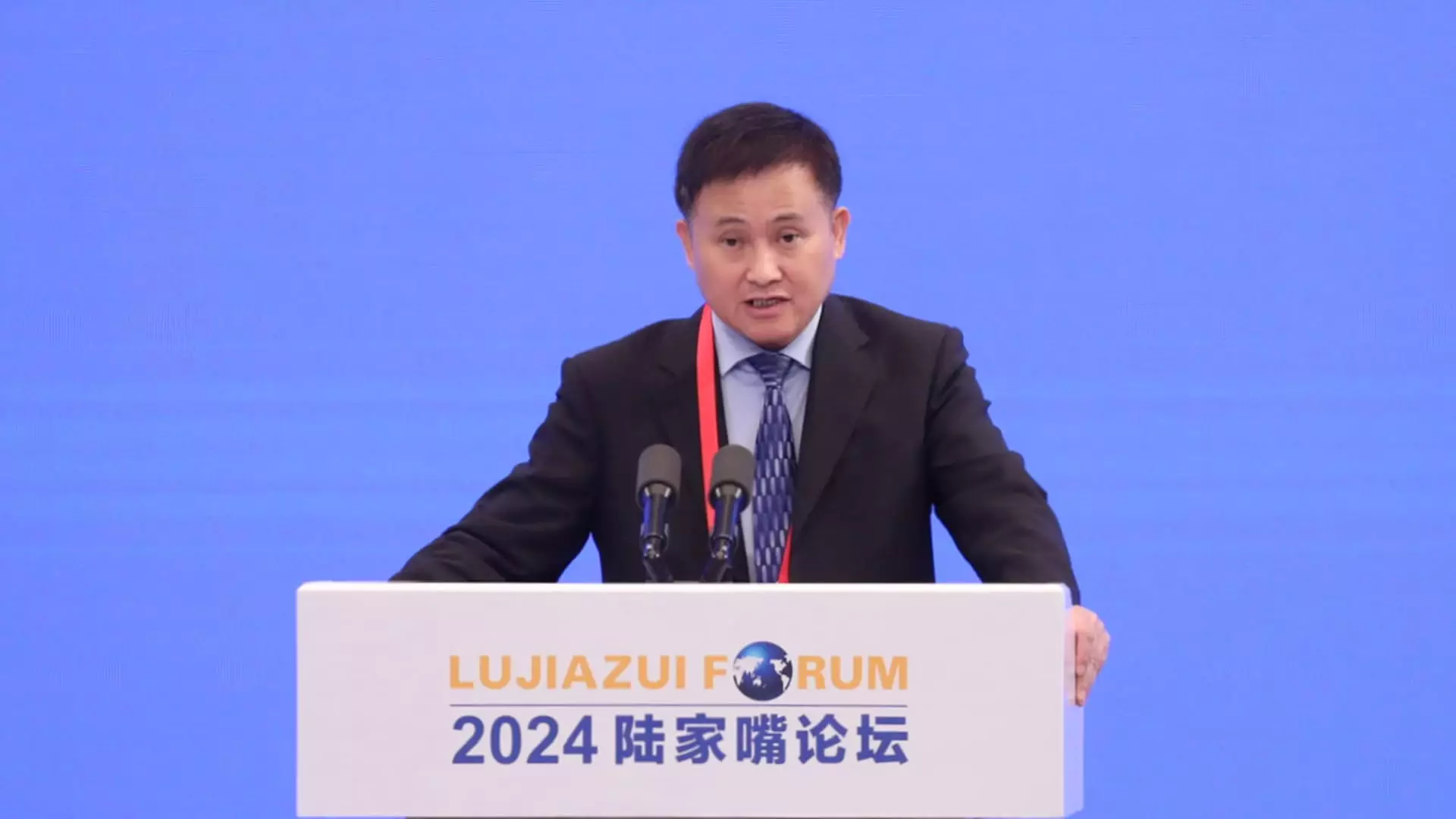As China navigates a complex economic landscape fraught with challenges, the recent announcements from the People’s Bank of China (PBOC) reflect a pivotal monetary policy shift intended to stimulate growth. During a press conference, Governor Pan Gongsheng outlined measures that signal a proactive approach to address the nation’s economic slowdown, notably through adjustments to the reserve requirement ratio (RRR) and interest rates. These developments highlight the intricate relationship between monetary policy and economic performance in China’s unique financial ecosystem.
The decision to reduce the reserve requirement ratio by 50 basis points emerges as a critical maneuver aimed at enhancing liquidity within the banking system. By lowering the RRR, banks are permitted to retain a smaller portion of deposits in reserve, thereby increasing their capacity to lend. This policy shift aligns with the PBOC’s overarching objective to bolster economic activity in light of declining growth rates caused by factors such as a sluggish real estate market and dwindling consumer spending.
While Pan did not specify the timing for the RRR cut, he indicated that it would occur in the “near term,” instilling optimism among investors and economists alike. Furthermore, Pan hinted at the possibility of an additional cut later in the year, contingent upon economic conditions. This suggests a level of responsiveness from the PBOC to emerging economic data, which is crucial for maintaining financial stability.
In conjunction with the RRR reduction, Pan announced a decrease in the 7-day repo rate by 0.2 percentage points. A decline in this rate is significant as it influences the cost of money in the short term, encouraging banks to engage in more lending activities. The immediate aftermath of these announcements witnessed a dip in China’s 10-year government bond yield, which plummeted to an unprecedented low of 2%. Such movements in the bond market underscore the market’s expectation of prolonged low-interest rates as the PBOC navigates its monetary policy.
However, the PBOC’s approach diverges from the more straightforward rate-setting strategies employed by the U.S. Federal Reserve. Instead of stabilizing a primary interest rate, the PBOC utilizes a suite of rates to manage monetary policy. The absence of an immediate reduction in the loan prime rate, which influences borrowing costs for both households and businesses, suggests a cautious stance in managing economic recovery.
The timing of these announcements cannot be discussed without acknowledging the backdrop of international monetary policy shifts. The convening of the press conference followed the U.S. Federal Reserve’s recent interest rate cut, which has amplified global discussions on easing monetary conditions amid economic uncertainties. By choosing to unveil its policy adjustments shortly thereafter, the PBOC demonstrates a strategic positioning that emphasizes its flexibility and readiness to act in the face of global economic changes.
The interconnectedness of the global economy means that domestic policy decisions are increasingly informed by international trends. As such, China’s central bank is compelled to continue evaluating both local and global contexts while formulating its strategies.
Looking Ahead: Challenges and Expectations
Despite the PBOC’s attempts to stimulate growth through adjustments to monetary policy, significant challenges remain. China’s economic performance is currently hindered by pervasive issues such as a faltering real estate sector and low consumer confidence, leading some economists to advocate for more assertive fiscal stimulus alongside monetary measures. The pathway to a stable recovery will likely require a multifaceted approach.
The PBOC’s recent monetary policy announcements reflect a calculated response to a slowing economy that requires urgency and flexibility. While the reduced reserve requirement ratio and cuts in interest rates are promising steps towards economic rejuvenation, the effectiveness of these measures will ultimately depend on their implementation and integration with broader fiscal policies. As the situation evolves, keeping an eye on how these strategies unfold will be critical for assessing China’s economic trajectory in the coming months.

